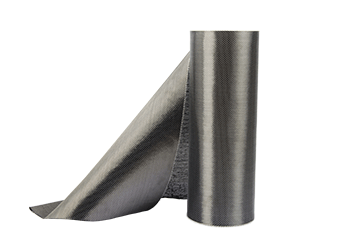Solutions
Horse Construction offers full range of structural strengthening materials with technical supports, documentation supports, products supports, project supports.
Carbon Fiber CFRP Sheet Reinforced Concrete Structure

Carbon fiber reinforcement process and construction method
Process flow
The carbon fiber reinforcement process is roughly as follows: concrete surface treatment, soil coating with bottom resin, leveling, wire impregnation resin coating, carbon fiber sheet paste, maintenance, painting, reinforcement project acceptance
Construction method
1 concrete surface treatment
Before carbon fiber reinforcement construction, the concrete surface must be treated to remove part of the load, so that the carbon fiber bonded structure can bear the load to a minimum. Concrete surface preparation observes the following points:
1) Concrete cracks. If the width of the concrete crack is less than 0.2mm, the surface should be smeared and sealed with epoxy resin. If the concrete crack is larger than 0.2mm, the crack should be filled with epoxy resin.
2) Clean up the damaged and incomplete parts of the concrete surface to keep the concrete surface flat.
3) Check whether the steel bars outside the concrete structure are corroded. If there is corrosion, deal with it immediately.
4) Repair the damaged parts of the components that have been cleaned, chiseled, chiseled and leaked, and repaired with epoxy mortar to keep the surface of the components flat.
5) The protruding parts on the surface of the concrete structure should be removed and smoothed. For the angular parts, use a grinder to grind into rounded corners, and the radius of the rounded corners must be greater than 30mm.
6) After the concrete surface is repaired and smoothed, blow the dust off the surface with a hair dryer, and clean the surface with water and alcohol to keep the surface dry.
2 coat primer resin
First, configure the paint in proportion, and then evenly apply the primer on the concrete surface with a roller brush, and wait for the resin paint to dry before proceeding to the next step of construction. After the bottom resin is applied and dried, some surfaces will appear bulging, which should be smoothed with emery sheet.
3 Leveling
Use leveling compound for leveling, repair the concave parts of the concrete surface with compounding compound, and fill in the places with large height difference such as formwork joints with leveling compounding compound. Next, the corners of the concrete material are treated, and the corners are repaired with a leveling compound to form a smooth arc with a radius of not less than 10mm, and the leveling compound can be cured and dried before proceeding to the next step of construction. The curing time of the leveling compound is determined according to the construction environment temperature, generally greater than 3h.
4 Coating wire impregnation resin
The impregnating resin is the key link of the entire reinforcement concrete, and the key material connecting the primer and the carbon fiber sheet. By impregnating the resin, the carbon fiber sheet is pasted on the concrete surface, and after rolling, the impregnating resin is soaked into the carbon fiber to form a whole to resist external forces together. The impregnating resin must have good permeability and adhesion to ensure that the carbon fiber material and the concrete structure are combined into a stressed whole, so as to achieve the purpose of reinforcement.
5 Paste carbon fiber sheet
Cut the carbon fiber sheet according to the size of the structural design. Generally, the length of the carbon fiber sheet is within 3m, except for special cases. Then, according to the proportion of the configuration, the main agent of the resin and the curing agent are weighed, and they are evenly stirred after being put into a container. The lap length of the carbon fiber sheet in the long direction of the sheet must be more than 10cm, more resin should be applied to the lap joint, and the width direction of the material does not need to be lapped. Before patching, the epoxy resin to be pasted must be uniformly painted with a roller. When patching, ensure the density between the materials, and there should be no air left between the fiber sheet and the resin. When patching, a special tool roller can be used to roll on the material sheet several times along the direction of the fiber, so that the resin can penetrate into the fiber and remove air bubbles. Repeat the above steps when pasting multiple layers. After pasting, you must wait for the carbon fiber material to dry before proceeding to the next layer of carbon fiber sheet pasting. The surface of the outermost carbon fiber layer should be evenly coated with a layer of adhesive material to prevent the reinforcement layer from being damaged.
Carbon fiber materials have the advantages of high elastic modulus, high tensile strength and corrosion resistance. It is used in concrete reinforcement structures, which is convenient for construction, can adapt to the repair of various structures, and seals concrete cracks, and improves the earthquake resistance and shear resistance of concrete without increasing the weight of the concrete structure.
You can find anything here you are in need of, have a trust trying on these products, you will find the big difference after that.

High strength, unidirectional carbon fiber wrap pre-saturated to form a carbon fiber reinforced polymer (CFRP) wrap used to strengthen structural concrete elements.

High strength, unidirectional carbon fiber fabric pre-saturated to form a carbon fiber reinforced polymer (CFRP) fabric used to strengthen structural concrete elements.

High strength, unidirectional carbon fiber sheet pre-saturated to form a carbon fiber reinforced polymer (CFRP) sheet used to strengthen structural concrete elements.